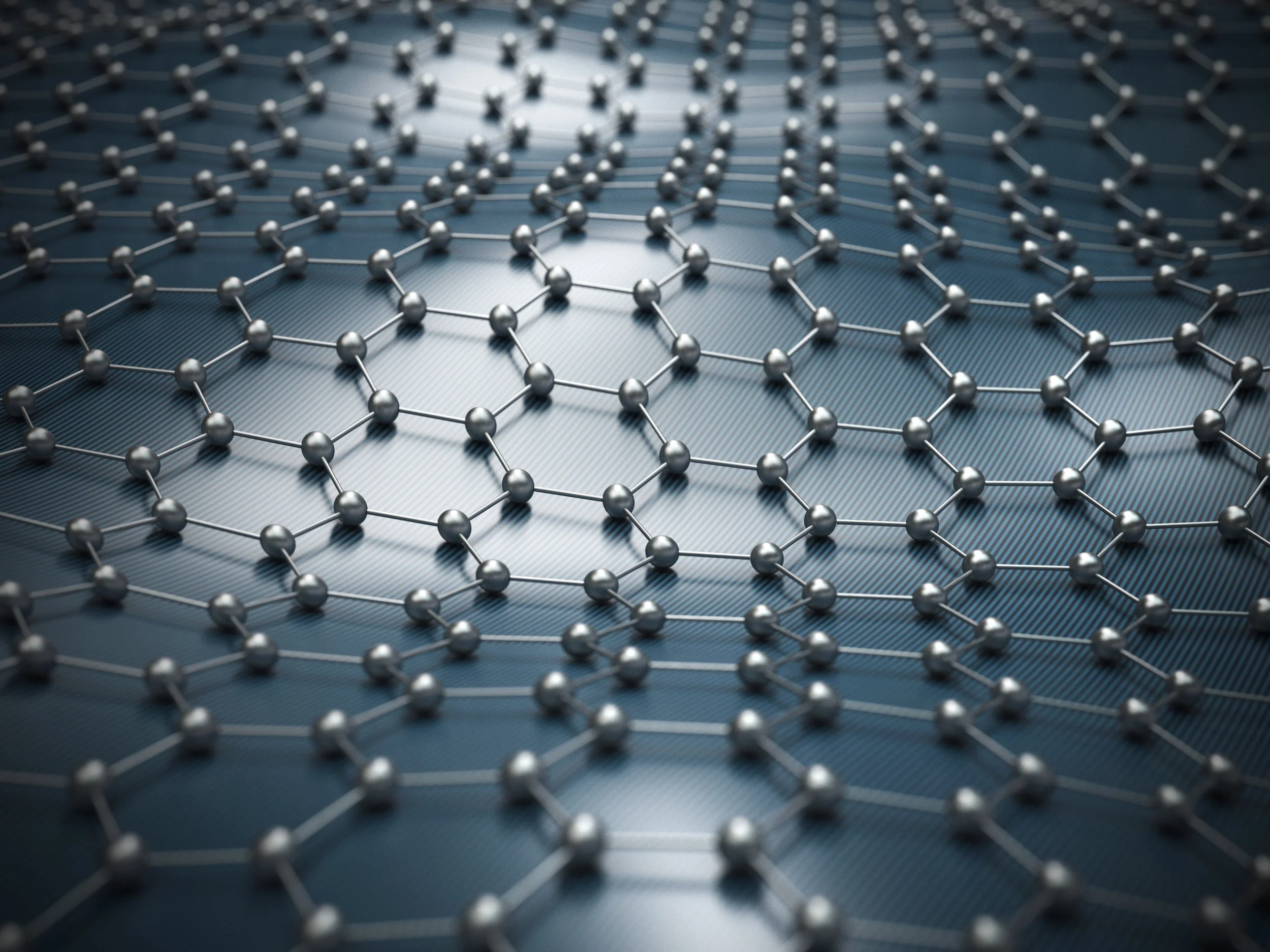2D Materials: Beyond the Realm of Graphene

Many of you will know about graphene and how it has been touted as the new wonder material that will change the face of many nanotechnology applications. Whilst graphene is the most promising in terms of its commercial potential, there are a host of other 2D materials out there with amazing properties that are still relatively unheard of in the scientific community. For clarification, a material is considered to be 2-dimensional when they are a single atomic layer with their electrons confined to 2-dimensional space.
There are two types of 2D material- those with a uni-atomic structure and those with a polyatomic structure. Graphene is an example of a uni-atomic material, as it composed of carbon atoms only. Other examples of uni-atomic 2D materials include silicene (silicon), germane (germanium), stanene (tin), and phosphorene (phosphorous).
Aside from graphene, polyatomic 2D materials are better known than their uni-atomic counterparts, with great potential being shown by hexagonal boron nitride (h-BN); which is similar in structure to graphene but with alternating boron and nitrogen atoms.
The biggest class of 2D materials is the transition metal dichalcogenides (TMDCs), which is a whole range of materials with a polyatomic structure. The most common being tungsten diselenide (WSe2), tungsten disulphide (WS2), molybdenum disulphide (MoS2) and molybdenum diselenide (MoSe2).
Why 2D materials?
Like graphene, all 2D materials exhibit excellent electronic properties, resulting from a non-existent (overlapping) and direct band gap between the electronic states of the bonded atoms. The excellent electronic, and optical, properties of 2D materials have lent themselves to many technology-focused applications, including in electronic and opto-electronic devices.
2D materials have great potential in the technology space but will require time to make an impact. Antonio Castro Neto, who is a leading figure in the field of 2D materials, believes that whilst the commercial prospects for the time being lie with graphene, the most interesting properties are exhibited by other 2D materials. A speech at the Graphene Innovation Summit and Expo last year in Nashville, USA, stated that there is nothing more to learn about the fundamental science of graphene and that the other 2D materials exhibit greater electronic properties than graphene.
The issue with many 2D materials is the work required to commercialise them. Despite the challenges, researchers in both industry and academia are working hard alongside the relevant organisations to make the potential a reality.
So where does the future lie?
The immediate future lies with graphene. That is almost certain. However, in the long-term, other 2D materials may start to establish themselves in the marketplace and the commercialisation of such materials will be made easier through the groundwork put in to commercialise graphene. There are many areas of nanotechnology that are continuing to grow, including 2D materials, and there is no evidence that they are going to slow down in the future; rather they will grow. One area of huge potential for graphene and other 2D materials is in flexible/wearable electronics, as the optical transparency, electrical conductivity and flexibility of these materials make them a highly suited material, and many prototypes are currently undergoing development.
Written by Liam Critchley





